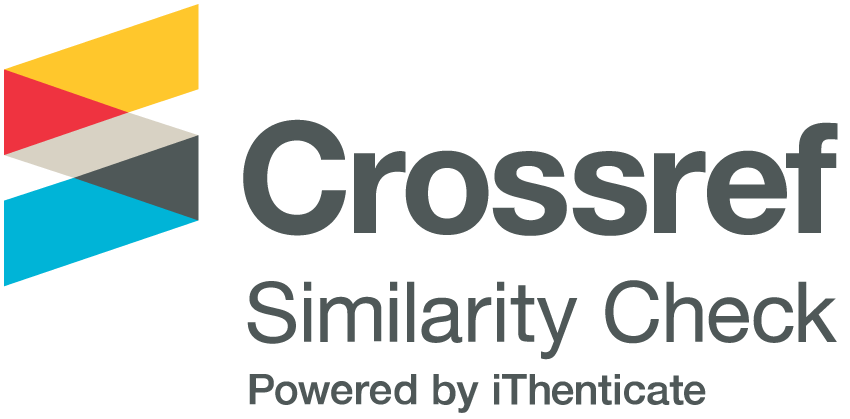Psychopathy and Narcissistic Abuse: the Consequences of an Unknown Type of Intimate Partner Violence
DOI:
https://doi.org/10.54790/rccs.85Abstract
This article addresses the issue of narcissistic abuse within couple relationships in which one of the partners is an integrated psychopath. Specifically, we seek to explain what it consists of and what the characteristics of such abuse are, in order to describe the consequences its consequences. First we explain what is psychopathy and then we explain in detail the specific characteristics of narcissistic abuse as well as its phases (love bombing, devaluation, rejection and hoovering). We achieve our objective through the analysis of the interviews we had with twenty women who declared having been in a couple relationship with an integrated psychopath. The methodological instrument to carry out the data analysis we have used is the Grounded Theory. Some of the conclusions obtained have to do with the establishment of a hitherto unknown pattern of violence and abuse linked to psychopathy and narcissism.
Downloads
Metrics
References
Alyson E. B. y Emanuele, F. (2023). Love is a losing game: Capacity for love mediates the relationship between the vulnerable dark triad and love styles. Personality and Individual Differences, 215 (112360). https://doi.org/10.1016/j.paid.2023.112360. DOI: https://doi.org/10.1016/j.paid.2023.112360
Babiak, P. (2000). Psychopathic manipulation at work. En C. B. Gacono (Ed.), The clinical and forensic assessment of psychopathy: a practioner´s guide. New York: Lawrence Erlbaum Associates.
Béjar, H. (1993). La cultura del yo. Madrid: Alianza.
Bleichmar, H. (1983). El narcisismo: estudio sobre la enunciación y la gramática inconsciente. Buenos Aires: Ediciones Nueva Visión.
Cleckley, H. M. (1941). The Mask of Sanity: an Attempt to Reinterpret the So-Called Psychopathic Personality. St. Louis: C.V. Mosby.
Craparo, G., Schimmenti, A. y Caretti, V. (2013). Traumatic experiences in childhood and psychopathy: a study on a sample of violent offenders from Italy. European Journal of Psychotraumatology, 41(6). https://doi.org/10.3402/ejpt.v4i0.21471 DOI: https://doi.org/10.3402/ejpt.v4i0.21471
Cutcliffe, J. R. (2000). Methodological issues in grounded theory. Journal of Advanced Nursing, 31(6), 1476-1484. https://doi.org/10.1046/j.1365-2648.2000.01430.x DOI: https://doi.org/10.1046/j.1365-2648.2000.01430.x
De Miguel, A. (1979). Los narcisos: el radicalismo cultural de los jóvenes. Barcelona: Kairós.
Edershile, E. A. y Wright, A. G. C. (2021). Grandiose and vulnerable narcissistic states in interpersonal situations. Self and Identity, 20(2), 165-181. https://doi.org/10.1080/15298868.2019.1627241 DOI: https://doi.org/10.1080/15298868.2019.1627241
Freud, S. (1986). On narcissism: An introduction. En A. P. Morrison (Ed.), Essential papers on narcissism (pp. 17-43). New York: New York University Press.
Garrido, V. J. (2000). El psicópata. Alzira: Algar.
Garrido, V. J. (2004). Cara a cara con el psicópata. Barcelona: Ariel.
Graña, L. G. (2023). La dicotomía público/privado y la violencia contra las mujeres en el ámbito de la pareja. Un análisis a través de la jurisprudencia de los sistemas europeo y americano de protección de derechos humanos. EUNOMÍA. Revista en Cultura de la Legalidad, (24), 184-208. https://doi.org/10.20318/eunomia.2023.7661 DOI: https://doi.org/10.20318/eunomia.2023.7661
Grapsas, S., Brummelman, E., Dufner, M. y Denissen, J. J. (2022). Affective contingencies of narcissism. Journal of Personality and Social Psychology, 123(2), 444-453. https://doi.org/10.1037/pspp0000406 DOI: https://doi.org/10.1037/pspp0000406
Grunberger, B. (1971). Le Narcissisme. París: Payot.
Guinea, F. S. y Bonilla, J. (2006). Neurobiología y neuropsicología de la conducta antisocial. Psicopatología Clínica Legal y Forense, 6(1), 67-81.
Hare, R. D. (1984). La psicopatía: teoría e investigación. Barcelona: Herder.
Hare, R. D. (1991). The Hare Psychopathy Checklist-Revised (PCL-R). Toronto: MultiHealth Systems. https://doi.org/10.1037/t01167-000 DOI: https://doi.org/10.1037/t01167-000
He, Y. (2023). Too Close to the Ego: Narcissists Affective Reaction to Advertising Depends on Its Relevance to Self-Image. Journal of Advertising, 52(2), 264-278. https://doi.org/10.1080/00913367.2022.2027298 DOI: https://doi.org/10.1080/00913367.2022.2027298
Herreros, J. L. T. (1995). Narcisismo y sociedad actual. Revista de Fomento Social, (200), 559-585. https://doi.org/10.32418/rfs.1995.200.2671 DOI: https://doi.org/10.32418/rfs.1995.200.2671
Jauregui, I. (2008). Psicopatía: pandemia de la modernidad. Nómadas. Critical Journal of Social and Juridical Sciences, 19(3).
Karpman, B. (1961). The structure of neurosis: with special differentials between neurosis, psychosis, homosexuality, alcoholism, psychopathy, and criminality. Archives of Criminal Psychodynamic, 4, 599-646.
Kernberg, O. F. (1970). Factors in the psychoanalytic treatment of narcissistic personalities. Journal of the American Psychoanalytic Association, 18(1), 51-85. https://doi.org/10.1177/000306517001800103 DOI: https://doi.org/10.1177/000306517001800103
Kohut, H. (1966). Forms and transformations of narcissism. Journal of the American Psychoanalytic Association, 14(2), 243-272. https://doi.org/10.1177/000306516601400201 DOI: https://doi.org/10.1177/000306516601400201
Kohut, H. (1968). The psychoanalytic treatment of narcissistic personality disorders: Outline of a systematic approach. The psychoanalytic study of the child, 23(1), 86-113. https://doi.org/10.1080/00797308.1968.11822951 DOI: https://doi.org/10.1080/00797308.1968.11822951
Kumar, M. y Sharma, A. (2023). Save the cinema, kill the critic: review of the film Chup: Revenge of the Artist. Media Asia, 50(3), 485-491. https://doi.org/10.1080/01296612.2022.2136865 DOI: https://doi.org/10.1080/01296612.2022.2136865
Lang, S., Klinteberg, B. y Alm, P. (2002). Adult psychopathy and violent behavior in males with early neglect and abuse. Acta Psychiatrica Scandinavica, 106, 93-100. https://doi.org/10.1034/j.1600-0447.106.s412.20.x DOI: https://doi.org/10.1034/j.1600-0447.106.s412.20.x
Lasch, C. (1979). The culture of narcissism. New York: Warner Books.
Lipovetsky, G. (1983). L’ère du vide. París: Folio.
Lipovetsky, G. (1990). El imperio de lo efímero. Barcelona: Anagrama.
Littlebear, S., Lofties, E. y Mikolon, T. (2023). Counselor Perceptions Regarding Narcissistic Personality Disorder, Narcissistic Traits, and Domestic Violence. Contemporary Family Therapy, 1(10). https://doi.org/10.1007/s10591-023-09667-8 DOI: https://doi.org/10.1007/s10591-023-09667-8
Malcolm, H. (1971). Generation of Narcissus. Boston: Little Brown and Company.
Miller, J. D., Lynam, D. R., Hyatt, C. S. y Campbell, W. K. (2017). Controversies in narcissism. Annual Review of Clinical Psychology, 8(13), 1-54. https://doi.org/10.1146/annurev-clinpsy-032816-045244 DOI: https://doi.org/10.1146/annurev-clinpsy-032816-045244
Millon, T. y Davis, R. (2001). Trastornos de la personalidad en la vida moderna. Barcelona: Masson.
Morán, C., González, M. T. y Landero, R. (2009). Valoración psicométrica del cuestionario de acoso psicológico percibido. Revista de Psicología del Trabajo y de las Organizaciones, 25(1), 7-16. https://doi.org/10.4321/s1576-59622009000100002 DOI: https://doi.org/10.4321/s1576-59622009000100002
Piñuel, I. (2008). Mi jefe es un psicópata. Barcelona: Alienta.
Piñuel, I. (2015). Amor zero: como sobrevivir a amores psicopáticos. Barcelona: Sb Editorial.
Poythress, N. G., Skeem, J. L. y Lilienfeld, S. O. (2006). Associations among early abuse, dissociation, and psychopathy in an offender sample. Journal of Abnormal Psychology, 115(2), 288-297. https://doi.org/10.1037/0021-843X.115.2.288 DOI: https://doi.org/10.1037/0021-843X.115.2.288
Pozueco, J. M., Romero, S. L. y Casas, N. (2011). Psicopatía, violencia y criminalidad: Un análisis psicológico-forense, psiquiátrico-legal y criminológico (Parte I). Cuadernos de Medicina Forense, 17(3), 123-136. https://dx.doi.org/10.4321/S1135-76062011000300004 DOI: https://doi.org/10.4321/S1135-76062011000300004
Sánchez Ramos, M. (2020). El mobbing entre congéneres en las instituciones educativas. RIDE. Revista Iberoamericana para la Investigación y el Desarrollo Educativo, 10(20). https://doi.org/10.23913/ride.v10i20.589 DOI: https://doi.org/10.23913/ride.v10i20.589
Sennett, R. (1980). Narcisismo y cultura moderna. Barcelona: Kairós.
Shejet, F. O. (2023). La violencia: Psicopatía, empatía y tratamientos. Edupsykhé. Revista de Psicología y Educación, 20(1), 1-4. https://doi.org/10.57087/edupsykhe.v20i1.4535 DOI: https://doi.org/10.57087/edupsykhe.v20i1.4535
Skinner, B. F. (1956). A case history in scientific method. American Psychologist, 11(5), 221-233. https://doi.org/10.1037/h0047662 DOI: https://doi.org/10.1037/h0047662
Švrakić, D. M. (1987). Pessimistic mood in narcissistic decompensation. The American Journal of Psychoanalysis, 47, 58-71. https://doi.org/10.1007/BF01252333 DOI: https://doi.org/10.1007/BF01252333
Sweet, P. L. (2019). The sociology of gaslighting. American Sociological Review, 84(5), 851-875. https://doi.org/10.1177/0003122419874843 DOI: https://doi.org/10.1177/0003122419874843
Taylor, J., Loney, B. R., Bobadilla, L., Lacono, W. G. y McGue, M. (2003). Genetic and environmental influences on psychopathy trait dimensions in a community sample of male twins. Journal of Abnormal Child Psychology, 31(6), 633-645. https://doi.org/10.1023/A:1026262207449 DOI: https://doi.org/10.1023/A:1026262207449
Tudor, H. G. (2017). Combustible. ¿Qué es lo que hace funcionar al narcisista? Oklahoma: Insight Books.
Walker, L. (1979). The battered woman syndrome. New York: Harper and Row.
Downloads
Published
How to Cite
Issue
Section
License
Copyright (c) 2024 Alejandra Ainz Galende, Rubén Rodríguez Puertas

This work is licensed under a Creative Commons Attribution-NonCommercial-ShareAlike 4.0 International License.










